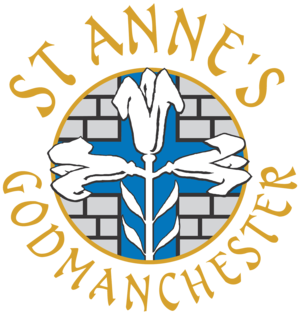Art
Art comes in many forms: drama, dance, poetry, craft, painting, sketching, digital art, music, mixed-media and sculpture to name but a few. It helps individuals to express themselves, be innovative, imaginative and thoughtful. It has the ability to be weaved throughout the curriculum. However, at St Anne's we do not underestimate its importance and ensure that it is taught discretely to all children.
Whilst there is a lot of freedom for schools in regards to developing their own Art curriculum within the National Curriculum, St Anne's decided to invest in teaching resources and materials from Kapow to support the delivery of this subject area. We felt it was essential to make sure that key knowledge and skills were taught in line with the schools approach to a carefully planned and sequenced curriculum.
With the support of these materials we have developed a curriculum that are in line with the three main knowledge areas that were recently discussed in an OFSTED review paper focusing on the delivery of Art and Design (See Ofsted review paper by clicking here).
The three areas are as follows:
Practical knowledge: - developing technical proficiency
The practical knowledge elements of our curriculum enables children to make decisions about what techniques, materials and media they wish to use and can explain why. From this they can then use this knowledge to create art by applying their understanding of skills, techniques and practices. Children learn about line, shape and form and combine this with the use of different media including pens, brushes and pencils. We provide plenty of opportunity for children to practice skills over time.
Theoretical knowledge - knowledge of artists and art history
Art is not created in a vacuum. It is influenced by the work of others such as modern and historical artists, the political situation, and different cultural traditions. Our curriculum aims to provide children with a historical and cultural context of artists and artwork. We explore a diverse range of art, craft and design examples and do not purely focus on names, dates and facts, but also meanings and interpretations. The aim is to help children put practical knowledge into context and make creative links.
Disciplinary knowledge - how art is studied, discussed and judged
Art knowledge and understanding is not just about creating and producing art, it is about exploring and discussing it. At St Anne's we value the development of the spoken word and encourage discussions and debates to further enhance our learning and understanding. Within our art curriculum, teachers encourage discussion and children questioning 'why' and 'how' artists do what they do. Through this children start to form opinions and make their own judgements on pieces of art. Children are also encouraged to reflect on their own work and
Our curriculum provides a mix of different activities: some with set outcomes that display a specific skill, and others that are less structured and allow the children to display their knowledge in an experimental manner.
Teachers assess children’s knowledge, understanding and skills in Art by making observations of the children working during lessons. They also record discussions that are had about art and the evaluations that children make of their own pieces. Children collate a 'portfolio' of art work over time that includes photos of pieces as well as a sketch book that showing how children's practical skills develop over time.
Spiritual, moral, social and cultural development and British Values
Collaborative work in Art develops mutual respect for the differing opinions, beliefs and abilities of others. In addition, children develop a respect for the environment, for their own health and safety and that of others. They learn to appreciate the value of similarities and differences and learn to show tolerance. A variety of experiences teaches them to appreciate that all people – and their views – are equally important.

